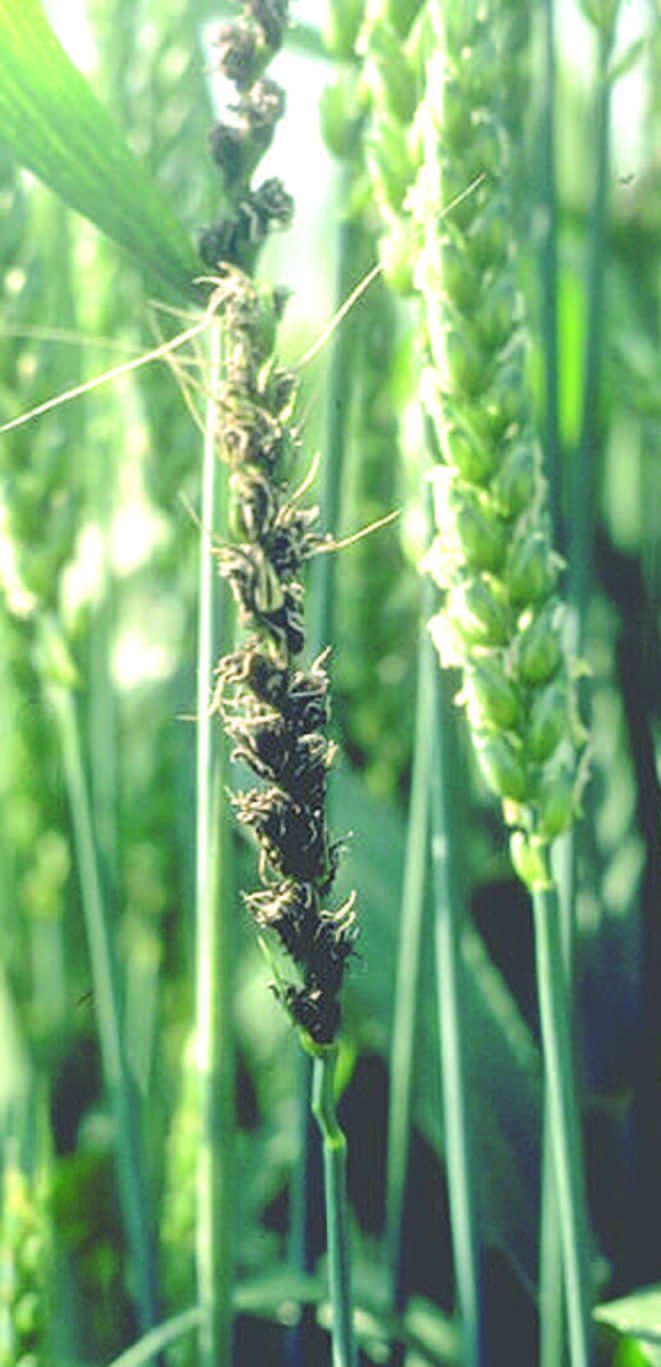- Home
- Knowledge library
- Loose smut in cereals (the importance of clean or fungicide-treated seed)
Loose smut in cereals (the importance of clean or fungicide-treated seed)
The UK Seed Certification Scheme and fungicidal seed treatments help to minimise loose smut disease problems in cereal crops. However, it is important to spot the signs of infection, as smutted ears can rapidly spread infection.
Cereal disease management homepage
How serious is loose smut in the UK?
The disease is most important in UK barley and rare in wheat. It also affects oats.
The UK Seed Certification Scheme helps ensure that loose smut remains at very low levels in UK seed stocks. Fungicidal seed treatments also control it well.
Although an infection of 0.1% (1 in 1000 ears affected) looks severe, it only results in a yield loss of 0.1%.
However, smutted ears can rapidly spread infection to surrounding crops. The grain of these crops becomes infected which, when re-planted, do not show symptoms until the following spring.
Life cycle and symptoms of loose smut
Pathogen
There are three crop-specific forms of this pathogen.
- Ustilago nuda (barley)
- Ustilago tritici (wheat)
- Ustilago avenae (oats)
Wheat and barley
The fungus that infects wheat and barley lies dormant within the embryo of infected seed.
When the infected seed germinates, the fungus grows within the developing shoot, eventually reaching the ear primordia. The fungus develops within the young ear, eventually replacing spikelets with masses of fungal spores.
Usually, a mass of black fungal spores replaces grain, affecting all or part of the ears. This leaves only the bare remains of the ear rachis. Because the blackened ears are obvious, the disease appears to be very severe, even at very low incidence levels.
Spore release occurs from infected ears as they emerge. These are spread by wind to open flowers.
Weather affects how long florets remain open and, hence, the time that the plant is susceptible to infection. Consequently, the infection levels vary considerably from season to season.
Once spores germinate, the fungus grows in the developing grain site.
.PNG) AHDB
AHDB
Oats
The fungus that infects oats does not penetrate the embryo and the rate of infection is typically lower than in wheat and barley.
High-risk factors
- Sowing untreated infected seed
- Using untested farm-saved seed
- Varieties with a longer flowering time
- Cool, moist conditions that prolong flowering
- Windy conditions, which increase spread
Management of loose smut in cereals
- Visually inspect farm-saved seed crops for signs of infection prior to harvest
- Do not farm-save seed from heavily infected areas (including crops and volunteers)
- Buy certified seed* or test home-saved seed for the presence of the pathogen
- Use a fungicidal seed treatment on infected seed (foliar fungicide treatments do not control loose smut)
- Additionally, control volunteers
*Visual examination of loose smut forms part of the UK Seed Certification Scheme. Percentage infection can also be established through seed tests – embryo extraction (takes 48 hours). The maximum acceptable infection is 0.5%. However, seed to be sold at a premium has a lower infection threshold of 0.2% (Higher Voluntary Standard).
As different loose smut pathogens affect wheat and oats, a high level in barley does not confer risk of higher levels in wheat and oats.
Varietal resistance to loose smut is not tested by the AHDB Recommended List, but varieties planned as seed crops that have an open flowering habit and longer flowering time, can be more at risk.



